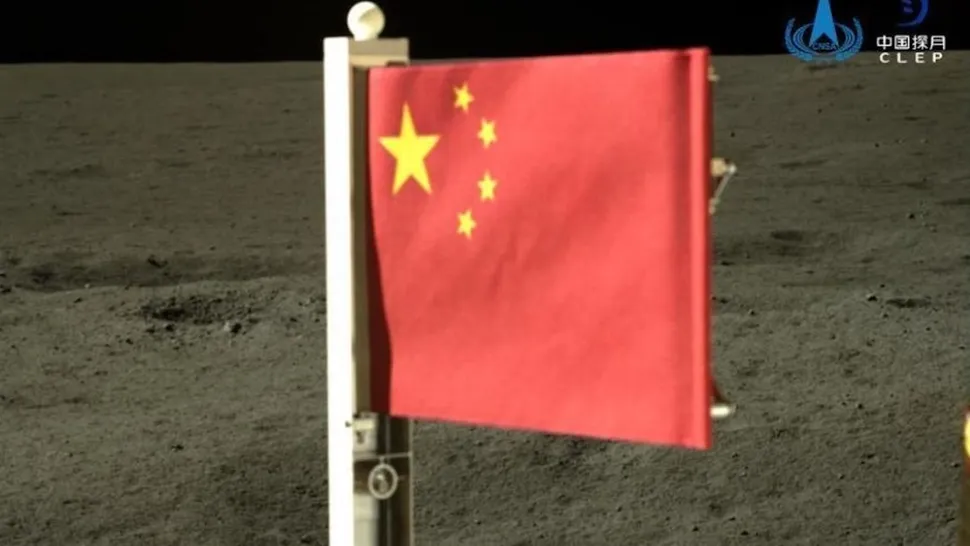About that five-star red flag now in position on the far side of the moon — it’s made of basalt, a type of volcanic rock that’s plentiful on the lunar surface (as well as here on Earth).
On June 2, China’s Chang’e 6 robotic lander touched down in the South Pole-Aitken (SPA) Basin on the moon’s mysterious far side. The Chinese national flag soon unfurled from the firmly footed Chang’e 6 lander/ascender.
That flag measures 300 millimeters by 200 millimeters (11.8 by 7.9 inches), about the size of an A4 sheet of paper. Weighing only 11.3 grams (0.4 ounces), the far side flag is similar in size to the one carried by China’s Chang’e 5 lander, which touched down on the moon‘s near side in late 2020 and delivered lunar samples to Earth shortly thereafter. (Chang’e 6 is also a sample-return mission; its material is expected to get here around June 25.)
Inorganic fiber
The decision to use basalt, China Central Television (CCTV) reported, was guided by the “in situ utilization” principle of leveraging resources available on the lunar surface rather than transporting materials from Earth. This approach aligns with China’s goal of sustainable lunar exploration, the state-run television network noted.
A member of the Chang’e 6 “national flag development team” is Cao Genyang, a professor at Wuhan Textile University.
“Building on this idea and the lunar ‘local specialty’ brought back by Chang’e 5, we have found in the literature that the main content of lunar soil is basalt,” Cao told CCTV. “So we thought that, since this material actually exists in large quantities on the moon, how can we use it as a high-performance inorganic fiber?”
Early research was performed on basalt fiber for China’s future lunar exploration project, Cao said.
Cutting-edge textile technology
Wang Yunli, a professor at Wuhan Textile University and a member of the Chang’e 6 national flag development team, added that the flag’s printing and dyeing process involved specialized approaches.
“Our pigments and formulas are specially developed to adapt the flag to the extreme conditions on the moon and the conditions during orbiting and landing” and makes use of “cutting-edge” textile technology, Wang said.
Basalt as an inorganic fiber is smooth and brittle, making it difficult to spin and maintain in high-durability colors.
Weathering lunar conditions
Cao explained that the flag development team found it challenging to create the ideal and desired ultra-fine fibers after encountering many failures.
Ordinary materials were unsuitable for the lunar flag. But the basalt fiber features outstanding insulation and radiation resistance, CCTV reported, making it ideal for weathering the harsh conditions on the lunar surface.
The result: a national flag with superior corrosion resistance, high-temperature tolerance and low-temperature endurance.
The final version of the national flag was produced with composite material primarily composed of basalt, accounting for 62% of all the materials.
“The entire production of the flag started with the rocks,” said Wang. “We first mixed together all the basalt rocks collected from different locations before breaking them into very small pieces.”
Multi-step process
The first step was to draw the processed basalt rocks into ultra-fine fibers. Those fibers were then spun into thread, leading to the third and fourth steps of weaving the threads into fabrics and printing.
The fifth step was to enhance the performance of the fabrics using specific physical and chemical methods and techniques, Wang added.
“After that, we proceeded with laser cutting, trimming and sewing until a national flag was made,” Wang said.
Source: https://www.space.com/china-change-6-moon-flag-basalt



